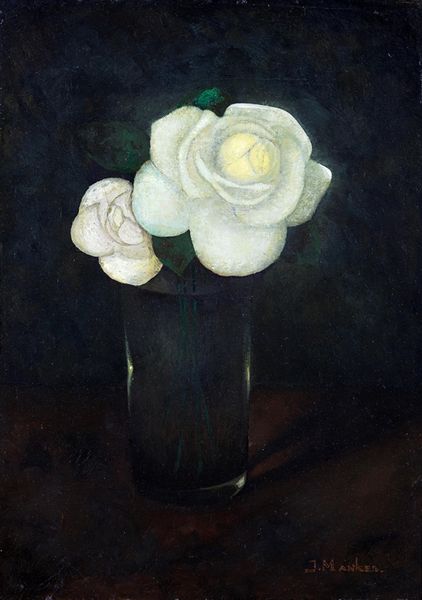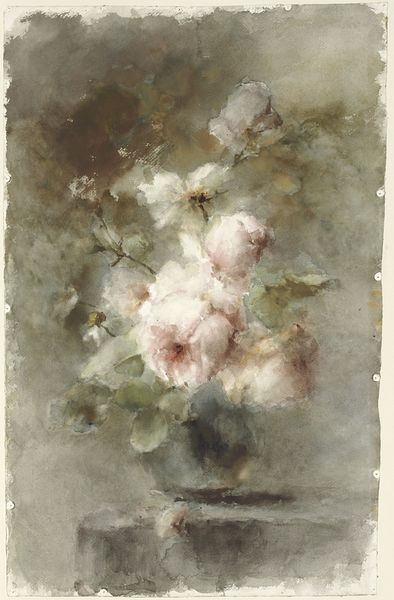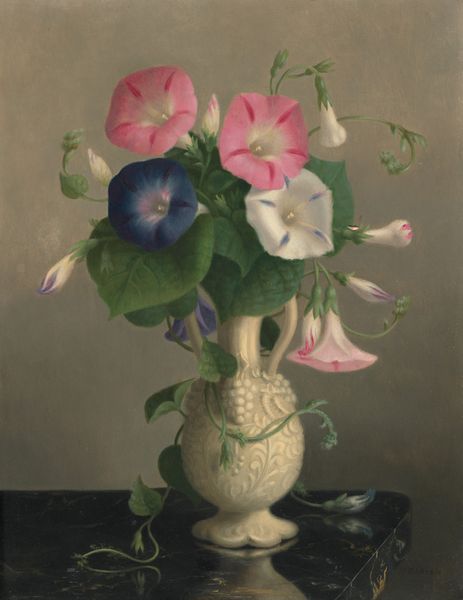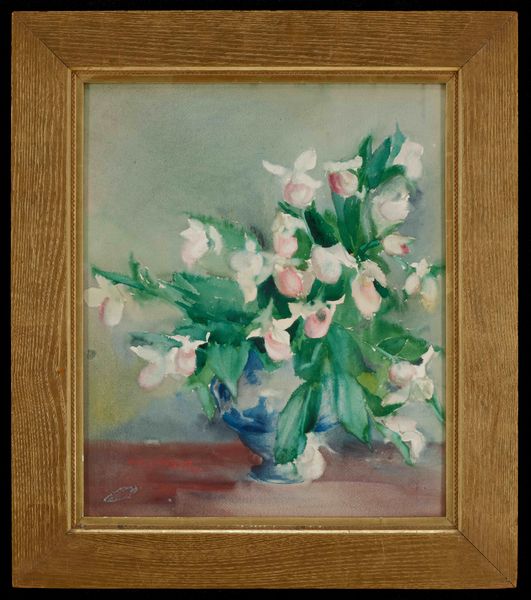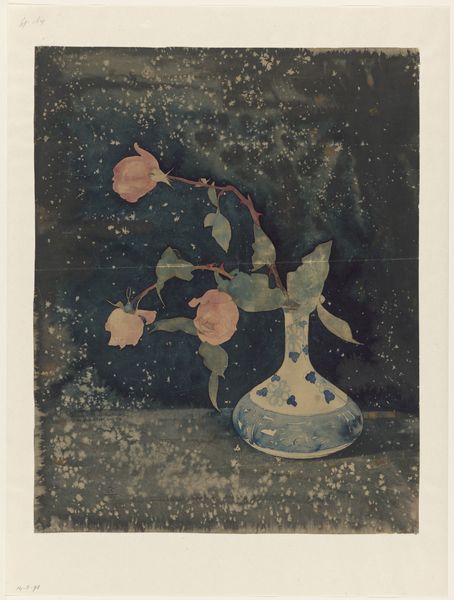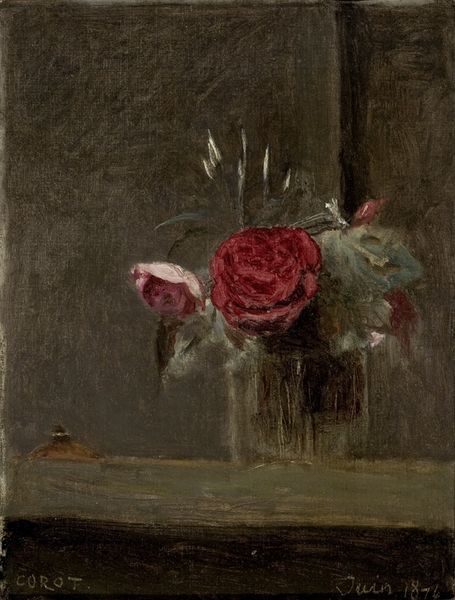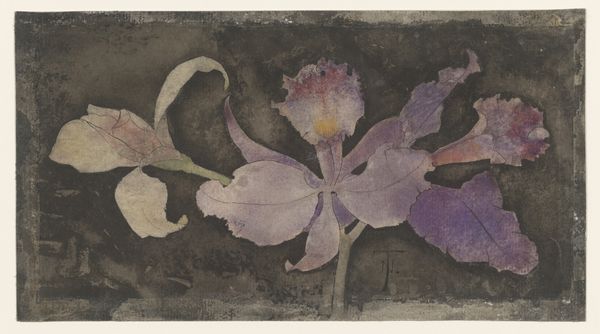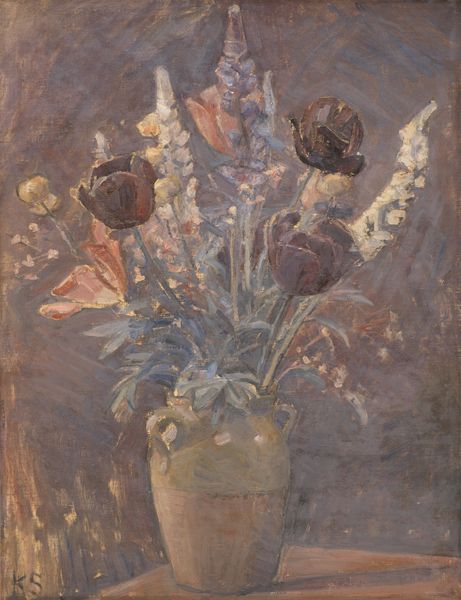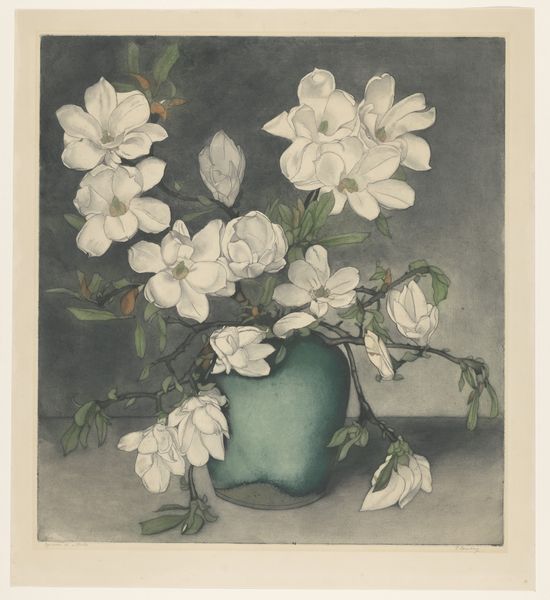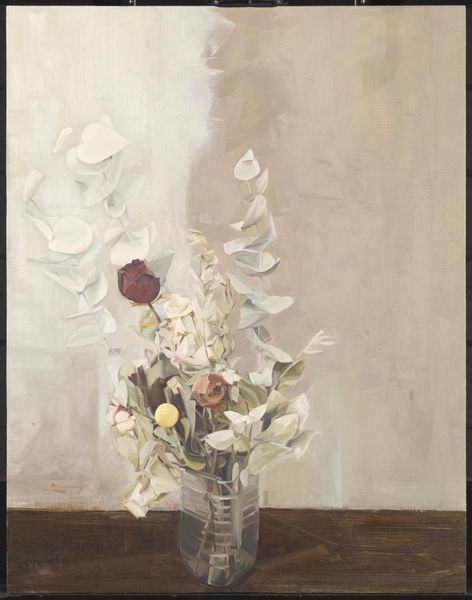
painting, oil-paint, impasto
#
portrait
#
painting
#
oil-paint
#
oil painting
#
impasto
#
modernism
#
watercolor
#
realism
Copyright: Public domain
Editor: Here we have Jan Mankes' "Glass with Lily" from 1910, an oil painting with a rather muted palette. It evokes a sense of quiet contemplation. What do you see in this piece? Curator: I see a carefully constructed visual argument deeply embedded in the artistic and socio-political landscape of early 20th century Holland. The subdued tones, almost monochrome, resist the bombastic displays favored by some contemporary movements. Consider the rise of the middle class and their preference for understated domestic scenes. Mankes provides it through painting. How does this inform our understanding of his position within the Dutch art scene? Editor: That's a great point about the middle class! It makes me wonder if the lily itself carries some specific symbolism relevant to the time? Curator: Undoubtedly. The lily, traditionally associated with purity and the Virgin Mary, undergoes a fascinating secularization in this period. Its presence in a domestic setting, captured with such intimacy, speaks to the changing role of religion and spirituality in everyday life. Do you perceive this as celebratory, or perhaps slightly melancholic? Editor: Hmm, melancholic. The single flower seems isolated, almost fragile against that dark background. Curator: Exactly. Think about the social anxieties and rapid modernization that permeated Europe at the time. Could the solitary lily also represent the fragility of tradition and the individual’s struggle to find meaning amidst societal shifts? Editor: I hadn’t considered the wider European context! This painting is far more complex than I initially thought. Curator: It highlights how art actively participates in broader cultural dialogues. Mankes wasn't merely painting a flower; he was engaging with the anxieties and aspirations of his time. Editor: I definitely understand Mankes' approach in a different light now. It's so interesting how a seemingly simple image can reflect so much history. Curator: Precisely. The apparent simplicity can often be a clever way to mask layers of societal commentary, making it a worthwhile contribution to art history discourse.
Comments
No comments
Be the first to comment and join the conversation on the ultimate creative platform.
